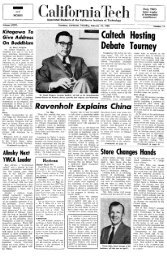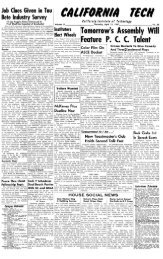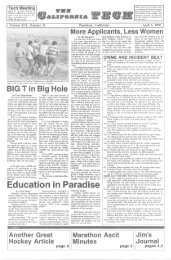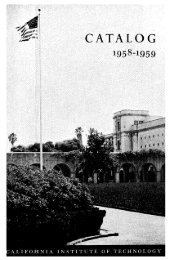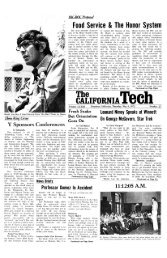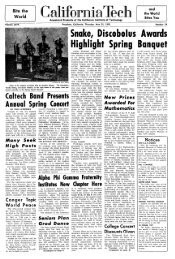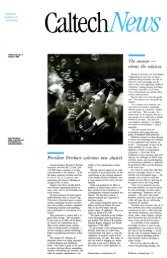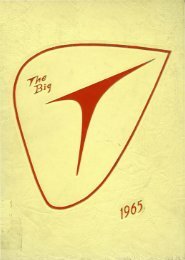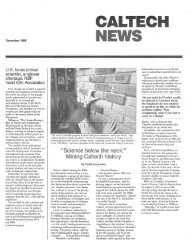PDF (1941) - CaltechCampusPubs
PDF (1941) - CaltechCampusPubs
PDF (1941) - CaltechCampusPubs
You also want an ePaper? Increase the reach of your titles
YUMPU automatically turns print PDFs into web optimized ePapers that Google loves.
CHEMISTRY AND CHEMICAL ENGINEERING 199<br />
Ch. 13 a, b, c. Inorganic Chemistry. 6 units (2-0-4), first and second<br />
terms; 4 units (2-0-4), third term.<br />
Prerequisite: Ch. 12 b, 21 a, b.<br />
The chemical and physical properties of the elements are discussed with reference<br />
to the periodic system and from the view-points of atomic structure and radiation<br />
effects. Such topic. as coordination compounds, the liquid ammonia system, the<br />
compounds of nitrogen, the halides, and selected groups of metals are taken up in<br />
some detail. The class work is supplemented by problems which require a study of<br />
current literature.<br />
Instructor : Yost.<br />
Ch. 16. Instrumental Analysis. 8 units (0-6-2); first term.<br />
Prerequisite: Ch. 12 c.<br />
Laboratory practice designed to familiarize the student with special analytical<br />
apparatus and methods, used both for process control and for research.<br />
Text: Instrumental Methods of Chemical Analysis, Lacey.<br />
Instructors: Wilson and Teaching Fellows.<br />
Ch. 21 a, b, c. Chemical Principles. 10 units (4-0-6), first, second, and<br />
third terms.<br />
Prerequisites: Ch. 12 b; Ph. 2 a, b, c, d; Ma. 2 a, b, c, d.<br />
Conferences and recitations dealing with the general principles of chemistry<br />
from an exact, quantitative standpoint, and including studies on the elements of<br />
thermodynamics; the pressure-volume relations of gases; on vapor-pressure, boiling<br />
point, freezing point, and osmotic pressure of solutions; on the molecular and ionic<br />
theories; on electrical transference and conduction; on chemical and phase equilibria;<br />
on thermochemistry, and the elements of thermodynamic chemistry and of electrochemistry.<br />
A large number of problems are assigned to be solved by the student.<br />
Text: Chemical Principles, Noyes and Sherrill.<br />
Instructor: Bates.<br />
Ch. 22. Thermodynamic Chemistry. 9 units (3-0-6); second term.<br />
A continuation of subject Ch. 21, given in much the same way. The topics<br />
considered include a further study of electrochemistry and thermodynamic chemistry.<br />
Practice is given in the computation of free energies, activities and entropies<br />
of typical substances.<br />
Text: Chemical Principles, Noyes and Sherrill.<br />
Instructor: Bates.<br />
Ch. 23 a, b, c. Chemical Principles. 10 units (4-0-6); first, second, and<br />
third terms.<br />
Prerequisites: Ch. 11 or Ch. 12 b; Ph. 2 a, b, c, d; Ma. 2 a, b, c, d.<br />
A selection of topics from Ch. 2 I a, b, c, and from Ch. 22 adapted to the<br />
needs of Science Course students in the Physics and Biology Options.<br />
Text: Chemical Principles, Noyes and Sherrill.<br />
Instructor: Dickinson.<br />
Ch. 24 a, b. Physical Chemistry. 10 units (4-0-6); first and second terms.<br />
Prerequisites: Ch. 12 a,b; Ma. 2 a, b; Ph. 2 a, b, c, d.<br />
A discussion of selected topics in physical chemistry, adapted to the needs of<br />
Science Course students in the Geology Option.<br />
Text: Physical Chemistry for Col/eges, Millard.<br />
Instructor: Corey.



